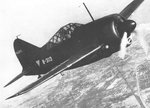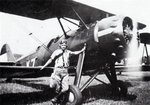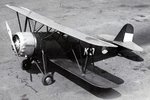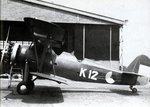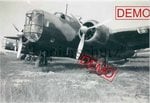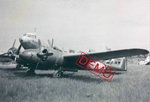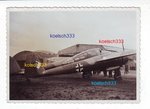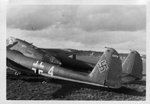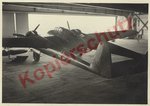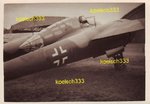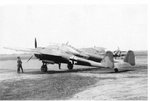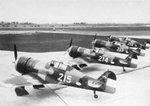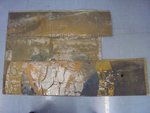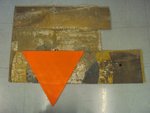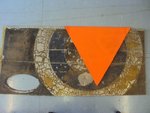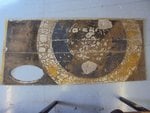After the end of World War I the Dutch government cut the defence budget and the Army Aviation Group was almost dissolved. As political tensions in Europe increased during the late 1930s the government tried to rebuild the armed forces again in 1938 but there were many problems, not least the shortage of pilot instructors, navigators and pilots to fly the new multiple engine aircraft. Lack of standardisation and resulting maintenance issues added to the complexity of the rebuilding task.
As war loomed, in July 1939 the Army Aviation Group was renamed the Army Aviation Brigade (Luchtvaartbrigade). In August 1939, the Netherlands government mobilised its armed forces, but due to limited budgets the Army Aviation Brigade operated only 176 combat aircraft of several types; Fokker T.V type bombers (16), Fokker D.XXI single-engine fighters (36), Fokker G.I twin-engine fighters (35), Fokker D.XVII single engine fighters (7), Douglas DB-8A-3N light bombers (17), Fokker C.X light bombers (20), Fokker C.V reconnaissance aircraft (33) and Koolhoven FK-51 artillery observer aircraft (20). In May 1940, Germany invaded the Netherlands. Within five days the Dutch Army Aviation Brigade was taken out by the German Luftwaffe. All of the Brigade's bombers, along with 30 D.XXI and 17 G.I fighters were shot down; two D.XXI and eight G.I were destroyed on the ground. Two G.I were captured by German forces, one of which was later flown to England by a Fokker pilot. The Douglas bombehrs were used as fighters because no suitable bombs were available, yet these aircraft were not suited for this role and eight were shot down and three destroyed on the ground in the first hours of the conflict.
In spite of their numerical inferiority, the Dutch armed forces did enjoy success against the Luftwaffe, having 350 Luftwaffe aircraft destroyed. While many were lost to anti-aircraft fire and crashes at improvised landing fields in the Netherlands, the Aviation Brigade did enjoy successes. The cost was high - almost 95% of the Dutch pilots lost. In recognition of their actions Queen Wilhelmina granted the highest Dutch military decoration, the Militaire Willemsorde (MWO), to the Army Aviation Brigade collectively. Some aircrews escaped to England and on June 1, 1940, 320 Squadron and 321 Squadron were established there under RAF operational command. Due to a shortage of personnel, 321 Squadron was absorbed by 320 Sqn in January 1941. Although their personnel were predominantly from the Navy Air Service, Army Aviation aircrew also served with 320 Sqn until the end of the war. In 1941, the Royal Netherlands Military Flying School was re-established, in the United States at Jackson Field (also known as Hawkins Field), Jackson, Mississippi, operating lend-lease aircraft and training all military aircrew for the Netherlands.
The separate Militaire Luchtvaart van het Koninklijk Nederlands-Indisch Leger (ML-KNIL; Royal Netherlands East Indies Army Military Air Service) continued in the Netherlands East Indies (NEI), until its occupation by Japan in 1942. Some personnel escaped to Australia and Ceylon. 321 Squadron was re-formed in Ceylon, in March 1942, from Dutch aviators. In 1942, 18 (NEI) Squadron, a joint Dutch-Australian unit was established, in Canberra, equipped with B-25 Mitchell bombers. It saw action in the New Guinea campaign and over the Dutch East Indies. In 1943, 120 (NEI) Squadron was established. Equipped with Kittyhawk fighters, it flew many missions under Australian command, including the recapturing of Dutch New Guinea. In June 1943, a Dutch fighter squadron was established in England. 322 (Dutch) Squadron, equipped with the Supermarine Spitfire, saw action as part of the RAF. 322 Sqn aircraft featured the British RAF roundels as well as the Dutch orange triangle. 322 Sqn was successfully deployed against incoming V-1 flying bombs. From mid-1944, during the invasion of Normandy, it executed ground attack missions over France and Belgium. In July 1944, the Directorate of Netherlands Airpower was established in London.
As war loomed, in July 1939 the Army Aviation Group was renamed the Army Aviation Brigade (Luchtvaartbrigade). In August 1939, the Netherlands government mobilised its armed forces, but due to limited budgets the Army Aviation Brigade operated only 176 combat aircraft of several types; Fokker T.V type bombers (16), Fokker D.XXI single-engine fighters (36), Fokker G.I twin-engine fighters (35), Fokker D.XVII single engine fighters (7), Douglas DB-8A-3N light bombers (17), Fokker C.X light bombers (20), Fokker C.V reconnaissance aircraft (33) and Koolhoven FK-51 artillery observer aircraft (20). In May 1940, Germany invaded the Netherlands. Within five days the Dutch Army Aviation Brigade was taken out by the German Luftwaffe. All of the Brigade's bombers, along with 30 D.XXI and 17 G.I fighters were shot down; two D.XXI and eight G.I were destroyed on the ground. Two G.I were captured by German forces, one of which was later flown to England by a Fokker pilot. The Douglas bombehrs were used as fighters because no suitable bombs were available, yet these aircraft were not suited for this role and eight were shot down and three destroyed on the ground in the first hours of the conflict.
In spite of their numerical inferiority, the Dutch armed forces did enjoy success against the Luftwaffe, having 350 Luftwaffe aircraft destroyed. While many were lost to anti-aircraft fire and crashes at improvised landing fields in the Netherlands, the Aviation Brigade did enjoy successes. The cost was high - almost 95% of the Dutch pilots lost. In recognition of their actions Queen Wilhelmina granted the highest Dutch military decoration, the Militaire Willemsorde (MWO), to the Army Aviation Brigade collectively. Some aircrews escaped to England and on June 1, 1940, 320 Squadron and 321 Squadron were established there under RAF operational command. Due to a shortage of personnel, 321 Squadron was absorbed by 320 Sqn in January 1941. Although their personnel were predominantly from the Navy Air Service, Army Aviation aircrew also served with 320 Sqn until the end of the war. In 1941, the Royal Netherlands Military Flying School was re-established, in the United States at Jackson Field (also known as Hawkins Field), Jackson, Mississippi, operating lend-lease aircraft and training all military aircrew for the Netherlands.
The separate Militaire Luchtvaart van het Koninklijk Nederlands-Indisch Leger (ML-KNIL; Royal Netherlands East Indies Army Military Air Service) continued in the Netherlands East Indies (NEI), until its occupation by Japan in 1942. Some personnel escaped to Australia and Ceylon. 321 Squadron was re-formed in Ceylon, in March 1942, from Dutch aviators. In 1942, 18 (NEI) Squadron, a joint Dutch-Australian unit was established, in Canberra, equipped with B-25 Mitchell bombers. It saw action in the New Guinea campaign and over the Dutch East Indies. In 1943, 120 (NEI) Squadron was established. Equipped with Kittyhawk fighters, it flew many missions under Australian command, including the recapturing of Dutch New Guinea. In June 1943, a Dutch fighter squadron was established in England. 322 (Dutch) Squadron, equipped with the Supermarine Spitfire, saw action as part of the RAF. 322 Sqn aircraft featured the British RAF roundels as well as the Dutch orange triangle. 322 Sqn was successfully deployed against incoming V-1 flying bombs. From mid-1944, during the invasion of Normandy, it executed ground attack missions over France and Belgium. In July 1944, the Directorate of Netherlands Airpower was established in London.



